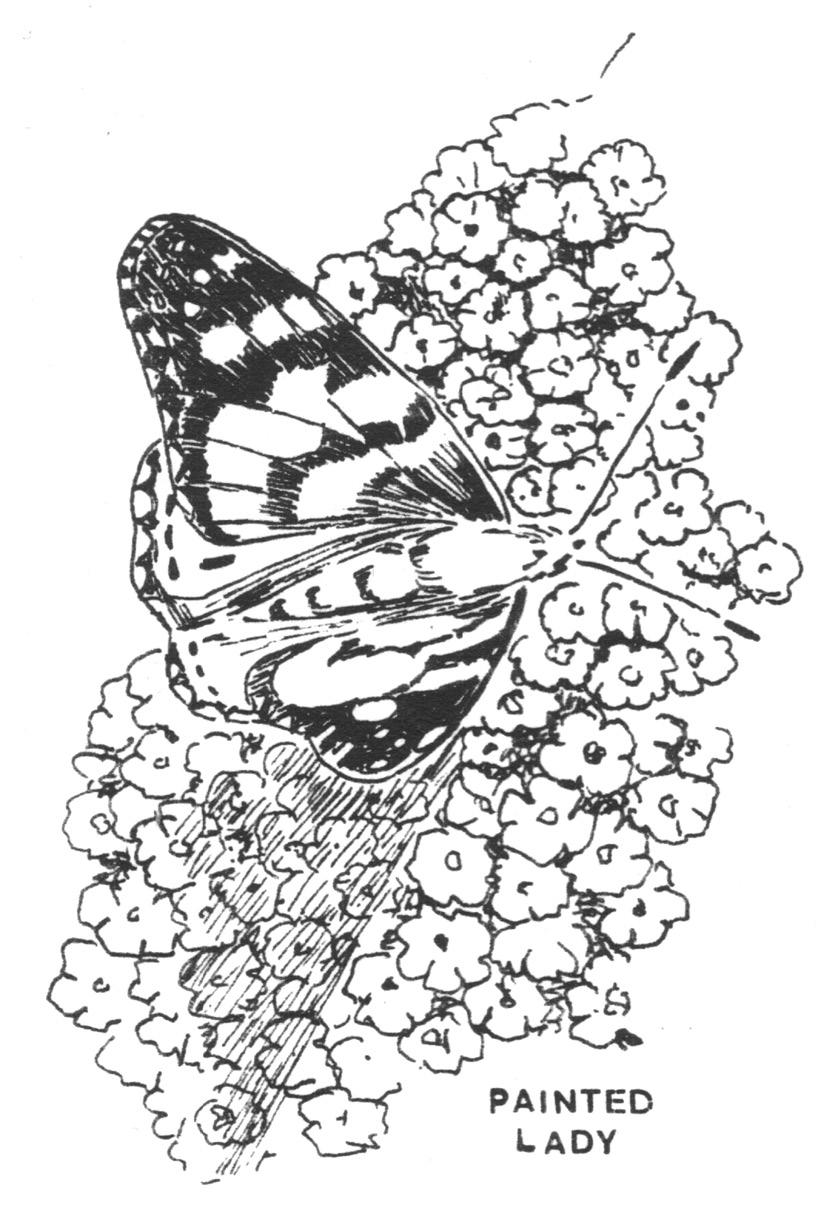
12 minute read
Do you want to find out more about butterflies? Peter Maddison
Thanks
Twm Wade
I thought some of you might know Gill Perkins who, I suspect was a volunteer into the WCBS scheme at the start. At the grand age of 80, she has decided to retire and wrote to me thus:
“I enclose my record sheets for this year and have decided it is time for me to retire. (I am 80 years young now!) It has been very enjoyable to survey a lovely part of Suffolk and I hope someone else will take it on.
This year hasn’t been good for Red Admirals, Small Tortoiseshells, Peacocks and Commas but Brimstones, Orange Tips and whites haven’t done badly. I hope next year will be better for all species.
All the best for the future”.
Casual observations of butterfly habits during the 2018 drought
Trevor Goodfellow
Purple hairstreak and white-letter hairstreak were apparently feeding more often at or near ground level. I suspect their food supply of honeydew at their normal treetop haunt was dried up or the aphids that produce the honeydew may have vacated the treetops as the oaks and elms (respectively) react to the hot weather.
The oaks will regenerate but it was noticeable that some elms were dying, possibly diseased trees, that lack of water accelerated their demise.
During the very hot weather I also noticed small heath and small copper, laying their eggs on dried and shriveled leaves, and not always their first choice of foodplant. I am not sure whether these eggs will be successful, but I hope the tiny hatching caterpillars manage to crawl to some food nearby if the chosen plant dies.
Another consequence of the prolonged dry spell was that grass died off and when the rains finally returned, weeds (wild flowers) recovered much quicker than the grass, ok for meadows but not for many gardens. For example: In late August, I watched brown argus and common blue butterflies frantically laying their eggs on these lush new growths of cranesbill, trefoils and vetches. This led me to wonder whether many lawns would get the ‘weed and feed’ treatment as a result and maybe the flourish of second brood argus and blues may be thwarted. The impact of these natural adaptions will be revealed next year. Fingers crossed that it is favourable for our ever-declining butterflies.
Garden Nectar Plants for Butterflies B is For Buddleia and Bowles Mauve Wallflower.
Richard Stewart
Much has been said about the ‘butterfly bush’ so I will restrict my comments to just two points. First, by planting early varieties like the graceful alternifolia and late- flowering weyeriana the flowering season can in a good year extend from late May to early December. The best way of seeing a wide range of buddleia species is to visit Trudie’s garden at Aldeburgh, normally in the last week of July as a Butterfly Conservation event. Details will be on the forthcoming 2019 programme.
Secondly, I have lost count of disappointed comments about lack of butterflies on summer flowering davidii species and I think it often occurs because there is no deadheading after the initial flowering period. In the long hot summer of 2018, I deadheaded six times, extending the flowering through to the start of October.
Species recorded nectaring on alternifolia in our Ipswich garden: Small White, Greenveined White, Holly Blue, Red Admiral, Small Tortoiseshell, Comma, Meadow Brown. and cuttings are easy. Ours survived the 2018 summer drought but its height was noticeably shorter. Like some species of buddleia, it can be grown in pots and fine examples, admittedly in very large pots, surround the main fountain in the Cambridge Botanical Gardens.
Nectaring: Brimstone, Large, Small and Greenveined White, Orange Tip, Common Blue, Red Admiral, Painted Lady, Small Tortoiseshell, Comma.
Davidii: Large Skipper, Brimstone, Large, Small and Green-veined White, Purple Hairstreak, Holly Blue, Red Admiral, Painted Lady, Small Tortoiseshell, Peacock, Comma, Silver-washed Fritillary, Speckled Wood, Grayling, Gatekeeper, Meadow Brown plus Silver Y moth and Hummingbird Hawk moth.
Weyeriana: Large White, Green-veined White, Red Admiral, Peacock, Comma, Speckled Wood, Gatekeeper, Meadow brown plus Silver Y moth.
Bowles Mauve Wallflower: this has the great advantage of having a long flowering period
Painted Lady by Beryl Johnson
A new Suffolk butterfly- Southern Small White (P. mannii)- a brief update
Bill Stone, Suffolk Butterfly Recorder
I have previously written about potential new species of butterfly for Suffolk and most recently about Southern Small White (P.mannii). This particular species of butterfly has expanded its range considerably in mainland Europe over the last few years and with a recently recorded northern movement of over 100km per year it is slowly heading towards the UK. In 2017, P. mannii had reached the Netherlands and had colonised southern Germany.
I have recently made contact with key observers in Holland and Belgium to ascertain what they have noticed as to P. mannii movements in 2018. In respect of the Netherlands, Chris Van Swaay from De Vlinderstichting (Dutch Butterfly Conservation) has reported that the spread of P.mannii has not been as extensive as expected with the suspected reason being the high temperatures experienced in Europe last year and the corresponding effects of drought. The 4th generation of P. mannii is the one that drives its expansion and in 2018 individuals had been recorded as far north as Waddensea and just to the north of Amsterdam. Of note, P. mannii is now common in the south-east of the country. The map, courtesy of Chris van Swaay below helpfully shows how P. mannii has been recorded during the period 2016-2018.
In Belgium, Pieter Vantieghem a well-known and respected butterfly expert has also commented that the expected expansion of P. mannii with the 4th generation in the Autumn was smaller. As such, P. mannii remains restricted to the southeast of the country. The map below, courtesy of Pieter Vantieghem shows this position well. Despite the restricted expansion in 2018 as described above there remains a real possibility that P. mannii could arrive in the UK in the Autumn of 2019. Given Suffolk’s position on the east coast of the UK that means it is very likely to be found on a coastal walk particularly in gardens where the larval foodplant, Candy Tuft (Iberis sempervirens) is found. Candy Tuft is a common and popular plant and is often used in formal gardens given its dense, clump forming habit.
So, in conclusion, please keep looking out for this small white butterfly particularly in the Autumn on the coast and ensure you take photos to confirm the identity.
NB: Identification help was given in the Suffolk Argus- Autumn 2017 (Vol 70- p 16-20).
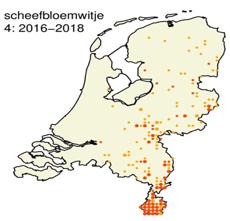
The herald of spring
Kev Ling
Winter has its pleasures for sure. The festive season with its prolonged build up and the countryside taking on a crisp, frosty appearance. For some at least the arrival of snow adds an added splendour to the landscape, with migrating birds from the north and east providing keen interest to the naturalists amongst us.
However, as the new year is welcomed, I start to have a yearning. That patient waiting and anticipation for greener seasons, when the trees are once again adorned with fresh leaves and the hedgerows begin to burst with colour and blooms. For me, spring is never truly here until I am treated to the first dancing flight of the Orange Tip. Never a year goes by without me feeling real emotion and elation at that first sighting.
My interest in Butterflies started as a small boy, when I would gaze excitedly at the sheer number of Nymphalidae on my father’s Buddleia. How I wish they were so prolific now. I would marvel at the range of colours on display from Red Admiral, Small Tortoiseshell, Peacock and Painted Lady. But nothing pleased me more that the conspicuous flash of bright orange from a male Anthocharis Cardamines (Orange Tip) in early April, the “Herald of Spring”.
This species is one of the first to emerge that has not overwintered as an adult. It enjoys a wide range of habitats from hedgerows to woodland rides where Garlic Mustard, one of its larval host plants is found. Another crucifer that is used for egg laying is Cuckooflower (Lady’s Smock). This tends to prefer damper ground, such as riverbanks and rain enriched meadows.
Male and female of this species are very different in both appearance and behaviour. The orange markings to the forewings of course make the male unmistakable. This also serves as a timely reminder to predatory birds that they are not the tastiest snack to be had, a result of mustard oils that have accumulated in the body from the larval foodplant. The male is also far more active than the female. Its most defined characteristic is how it patrols the hedgerows and countryside for much of the day, searching all available plants in the hunt for a female and seldomly stopping for rest or nectar as it does so. This can be particularly frustrating for the photographer. Although it is not especially difficult to photograph a male, patience is certainly a virtue as is understanding their habits. A male Orange Tip must not be pursued. As a child I didn’t have a camera but loved seeing them at rest. Conjure an image of a child running up and down the hedgerows in the vain hope that the butterfly would tire before he does. I soon learned that this didn’t work. For inspection of Orange Tips at close quarters, a partially cloudy day provides the best odds. Allow them to come to you and once the sun is obscured by cloud they settle, sometimes with their wings open, as they try to absorb the heat energy from the sun. Some of my best photographs have come with these tactics, using only a mobile phone as my camera of choice.
The females are slightly more difficult to identify, especially in flight when they can be mistaken for Small or Green Veined White. But once settled with their wings closed, they are unmistakable as they share the same mottled green and white underwing pattern as the male. The design being reminiscent of lichen (see photo page 27). Only the Bath White displays a similar pattern to that of the Orange Tip and this species is sadly not found in Britain. The underwing pattern also adds to the female’s ability to camouflage itself whilst at rest on its preferred plant choice.
Females are far less active than their male counterparts and are not as readily seen on the wing, being more concerned with egg laying. I have enjoyed analysing their behaviour though. As
the accompanying photo demonstrates I observed the female raising her abdomen to the approaching male. At first, I was of the understanding that this was a courtship ritual, but in fact the male was being shown a clear sign of rejection, probably as the female in question had already mated. I have however established that the same raised abdomen of a virgin female is an invitation for the male to court and mate with her.
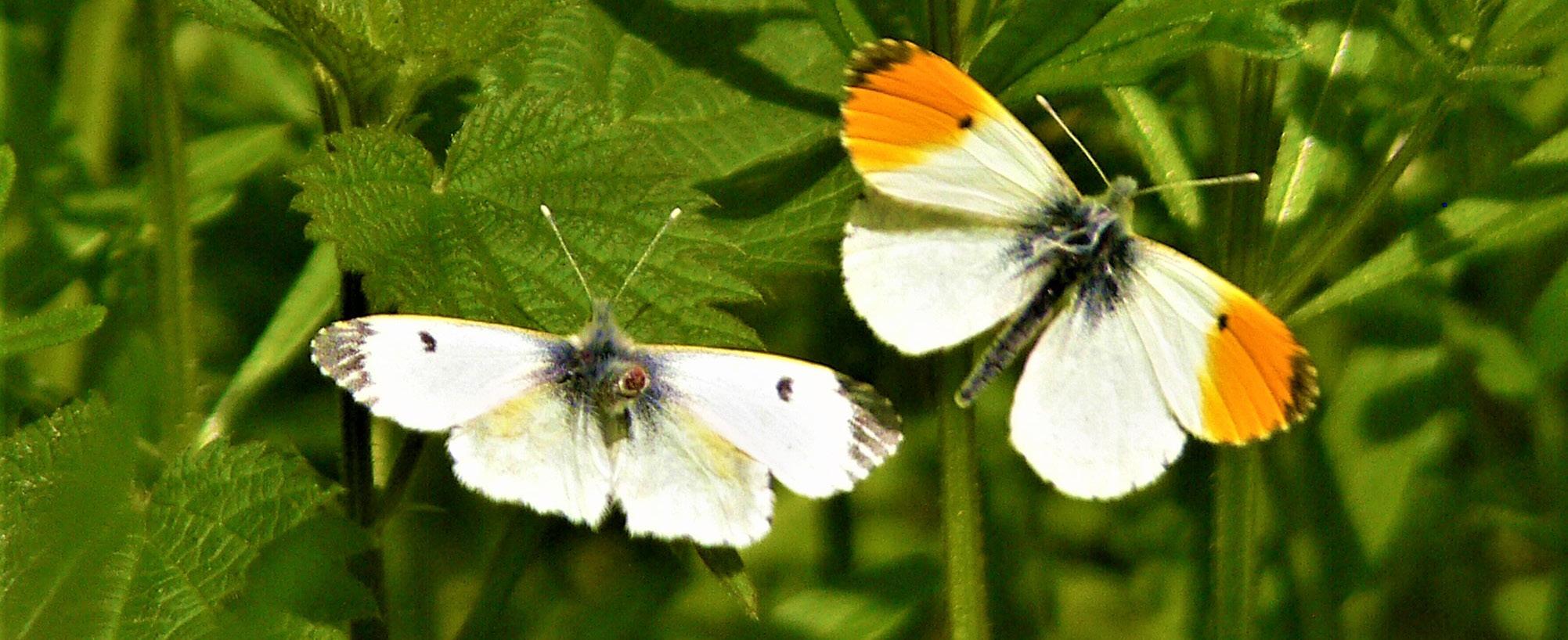
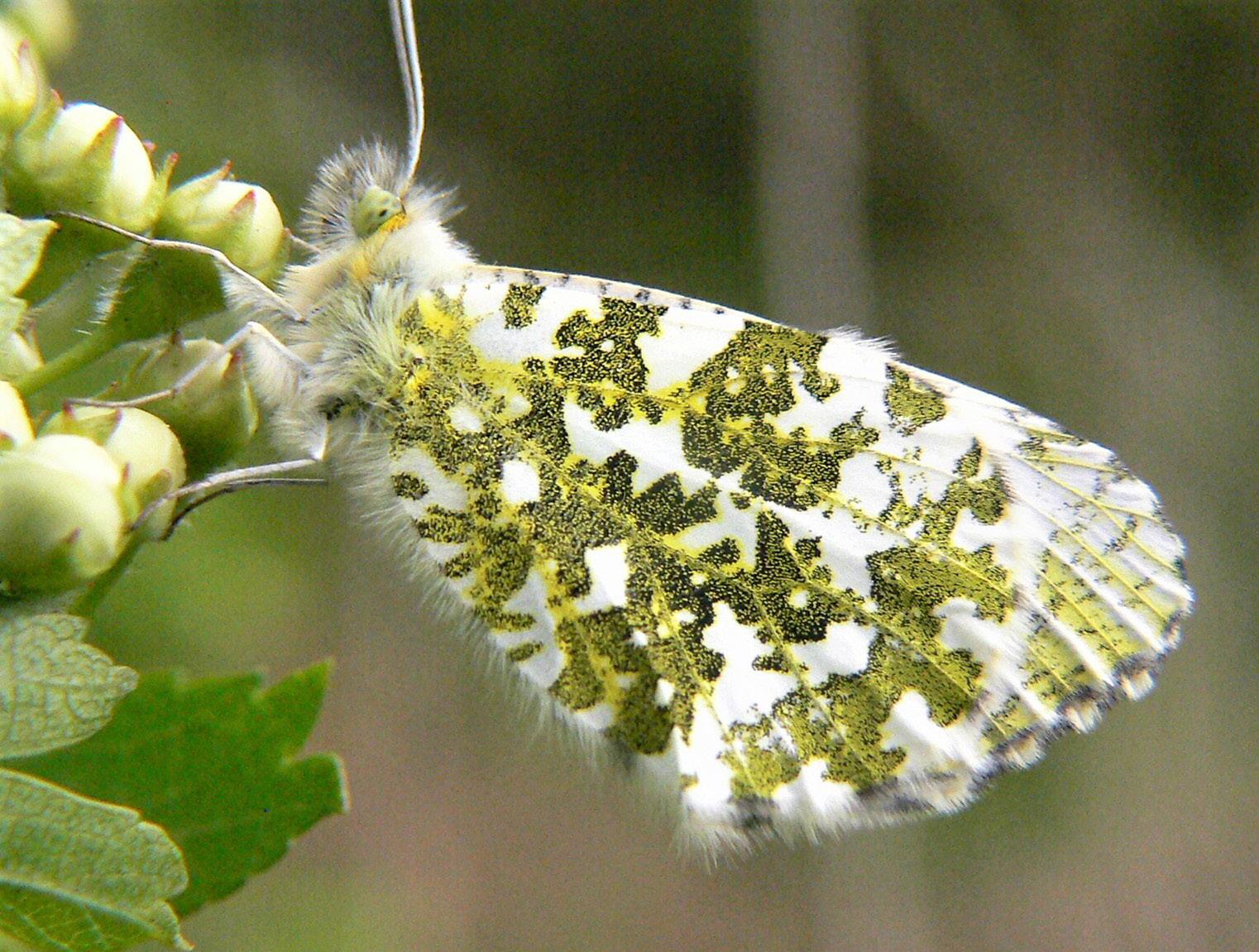
Equally as interesting and easy to observe is how the female seeks out a suitable place for laying her eggs. Firstly, it must be a crucifer and she is seen to brush past or momentarily land on a plant to establish this. Once the correct larval food plant is located, she will then ensure that it is in flower. She identifies this either by sight or using her feet to taste the plant. She can also detect if an egg has already been laid to that plant. After considering all these things she will usually deposit a single egg to the flower stalk. Orange Tips caterpillars are well known as being cannibalistic, so it is unusual to see more than one egg per plant. In 2018 though, I did observe for the first time a plant carrying two or three eggs.
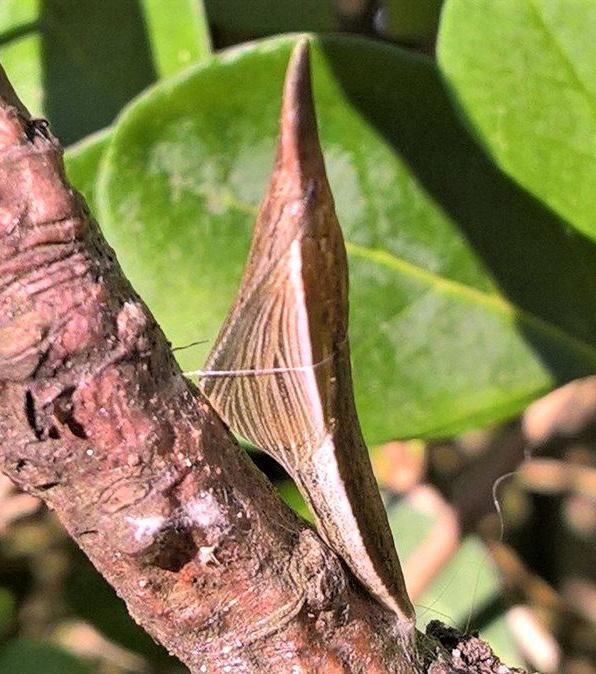
The next two stages of an Orange Tips journey to adulthood are also surprising easy to observe. Although greenish-white when first laid, the egg soon turns a vivid orange colour making them one of the easiest of any species to find. The egg will be found on the top part of the stem just below the flowerhead. I like to pack a magnifying glass in my camera bag so that I can see their exquisite detail.
The caterpillar emerges 10-14 days later, eats its eggshell and then begins feeding on the developing seed pods. It is at this point that they become easy to observe to the trained eye as they lay atop the seed pod, camouflaged nicely as they eat. The caterpillar will go through four instars before it heads off, away from the larval foodplant to pupate. in the wild, despite them remaining in this stage for well over three hundred days. I hatched a plan to increase the odds of finding my elusive holy grail. I had not seen an Orange Tip in my back garden before, so Garlic Mustard was planted (Being a biannual you may not get flowers until the second year). But when they did flower, we immediately attracted them, and one or more females had deposited a dozen eggs to our small patch of plants. As expected only a proportion made it to 4th instar, but overnight they went walkabout and I never did find a single pupa. Last spring however I kept my eye on a particular caterpillar, and with the cunning addition of some fine netting at just the right time, I restricted its onward journey and located the final pupation position. It was worth the forty something year wait, my very first Orange Tip pupa (see photo page 27).
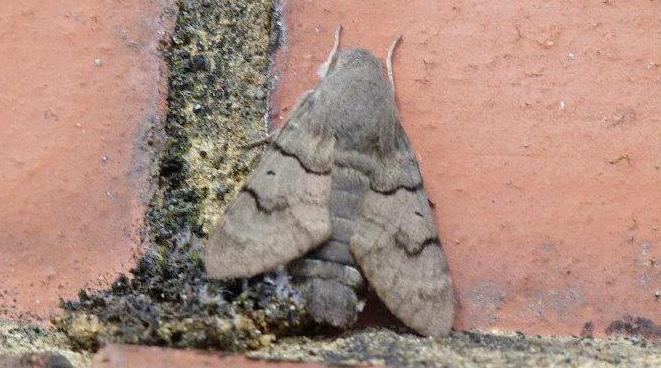
All too soon the highlight of my butterfly year is at an end. How I wish my favourite species had more than a single brood, to prolong that enjoyment. But just as the Orange Tip disappears, summer is then starting, and the promise of many more species dilutes the disappointment that I will have to wait another 10 months before the child inside me is woken once more.
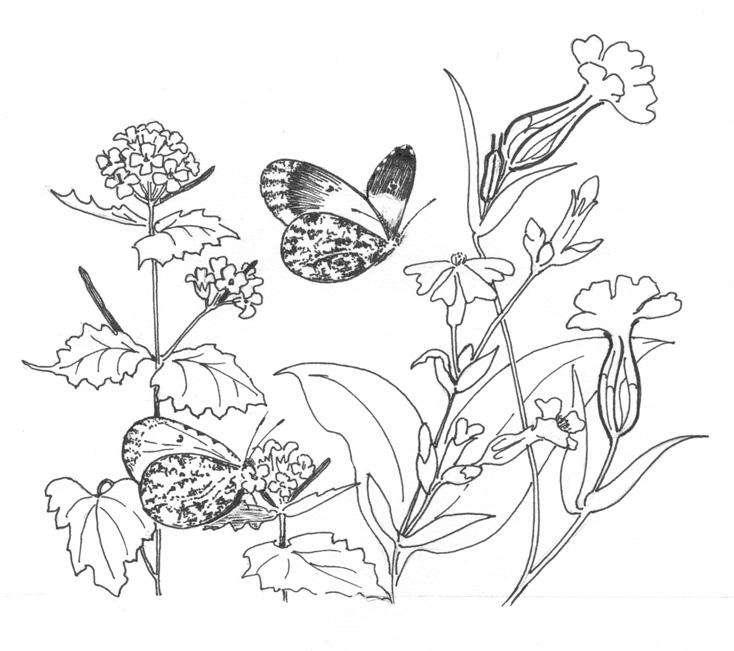
Since I was a child, one of the things at the top of my butterflying bucket list, was to find an Orange Tip pupa. Sadly, they are extremely difficult to find
Orange Tip by Beryl Johnson Orange tip pupa by Kev Ling Orange tip by Kev Ling
Humming-bird hawk by Jenny and Gary Plank
White admiral. The Suffolk ArgusRougham estate SWT farmland survey by Trevor Goodfellow
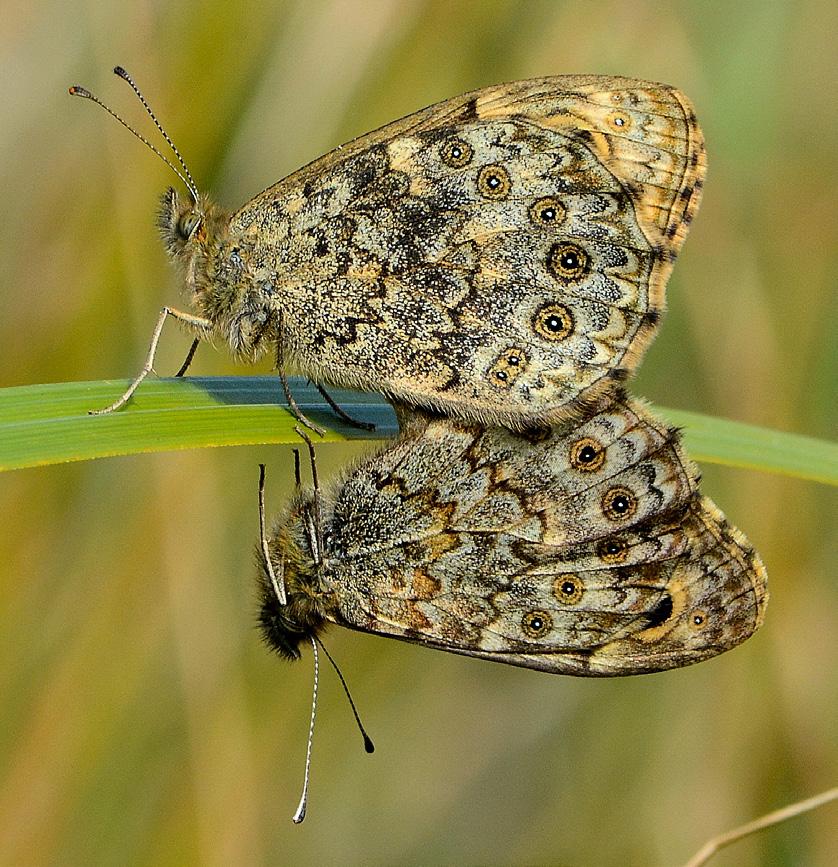
Red admiral by Mark Brewster
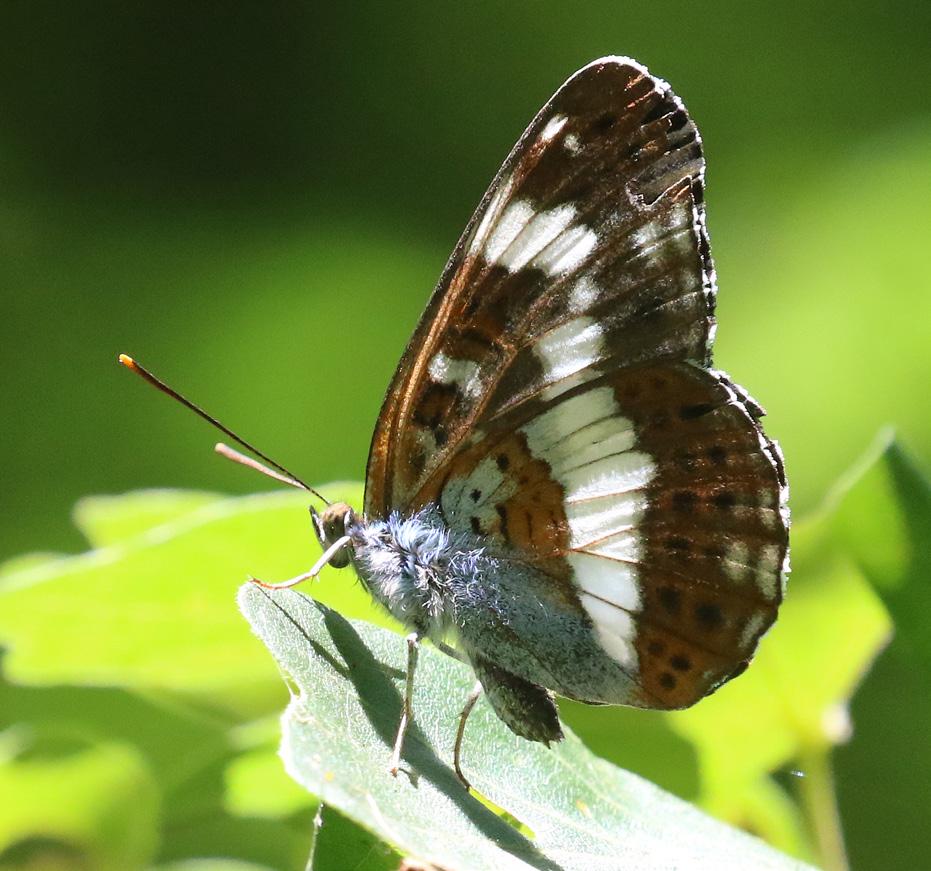
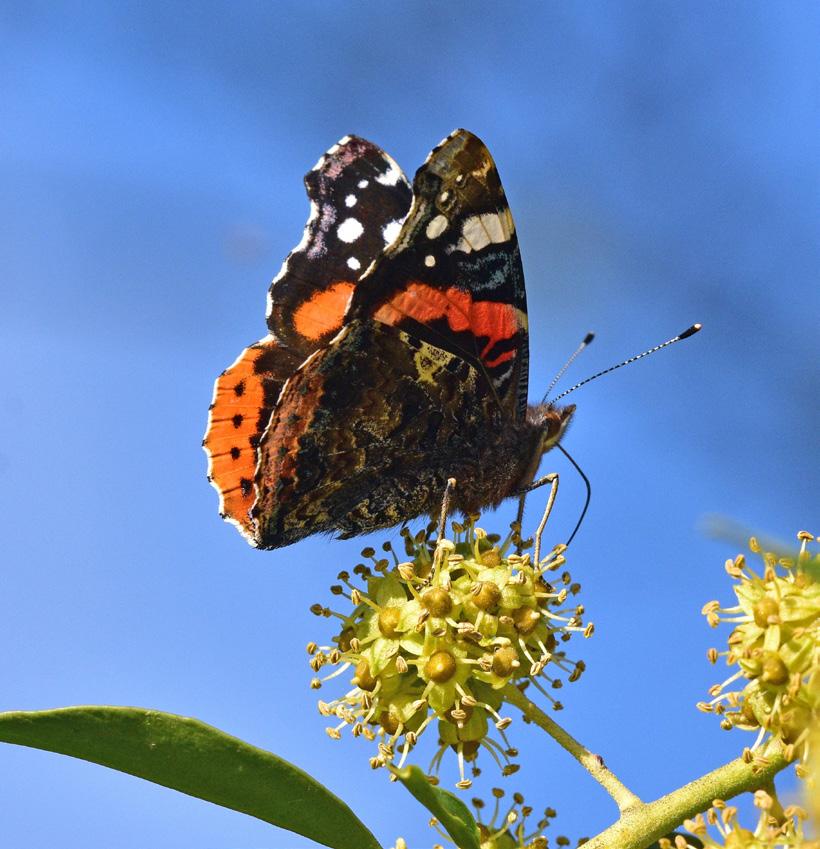
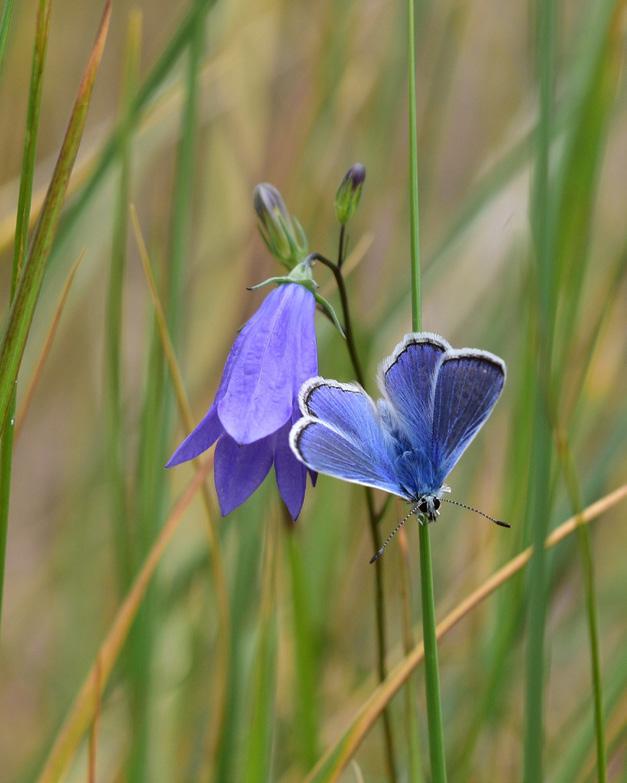
Common blue by Mark Brewster Wall browns by Robert Quadling
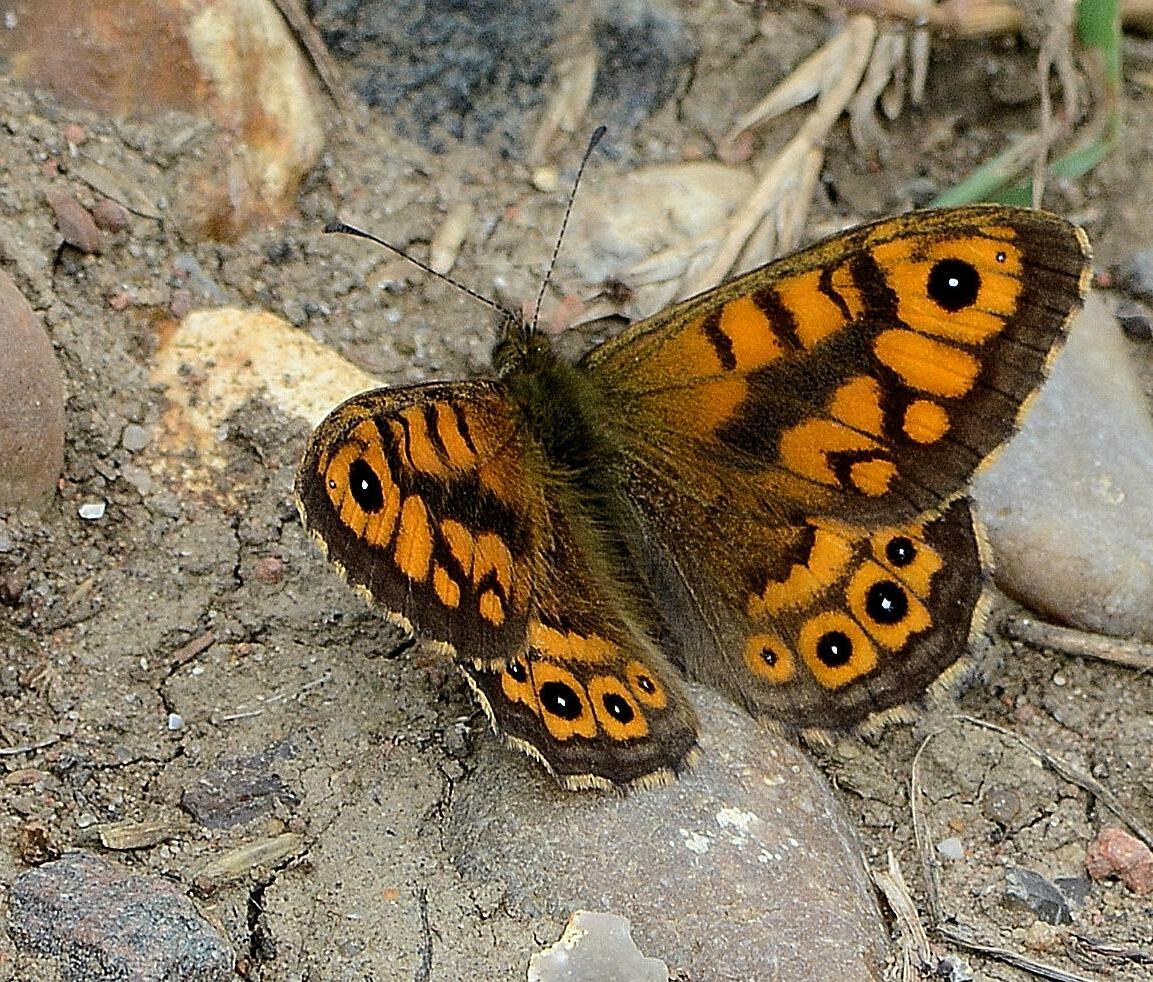
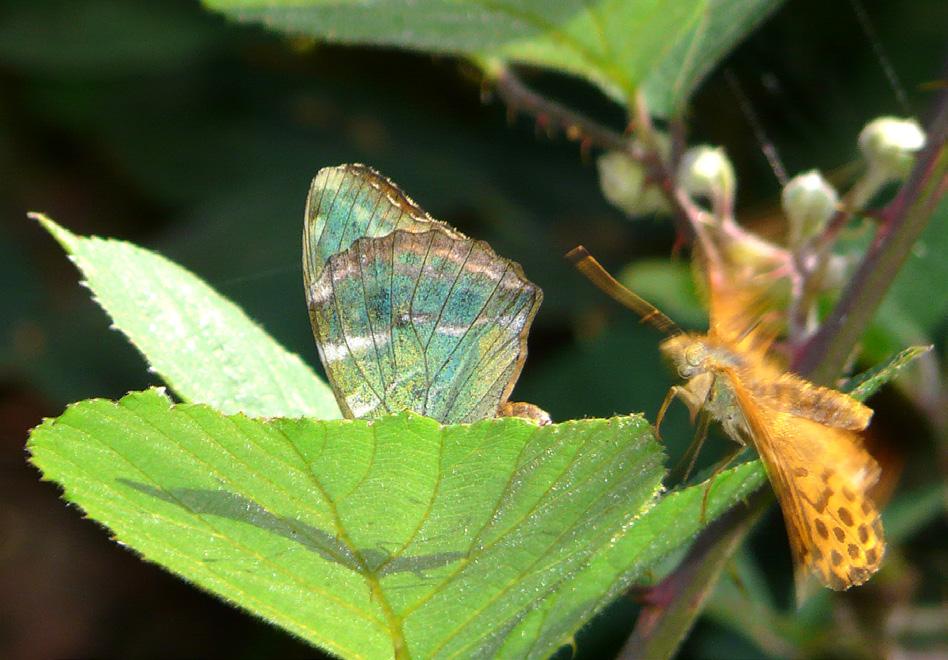
Silver-washed fritillary ‘valezina’ SWT farmland survey by Trevor Goodfellow
Wall brown by Robert Quadling






